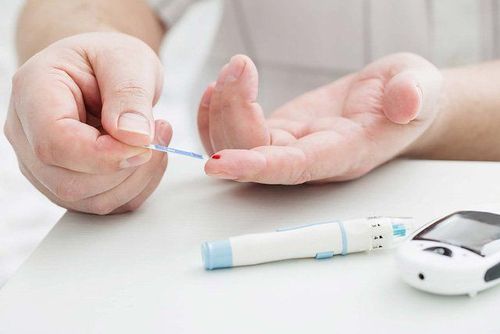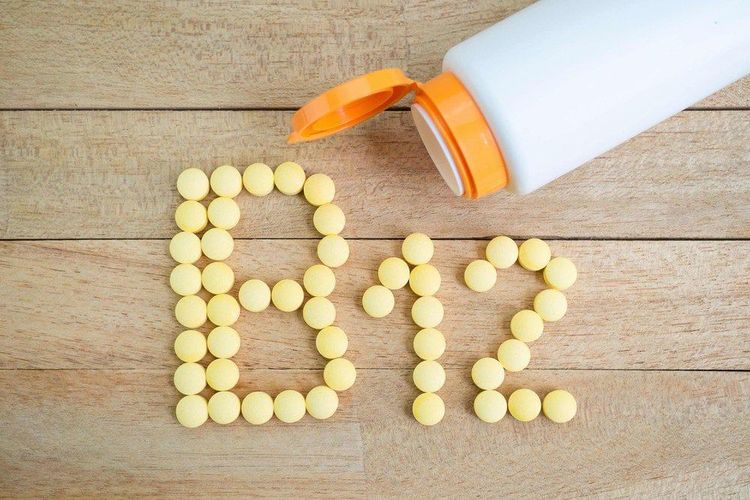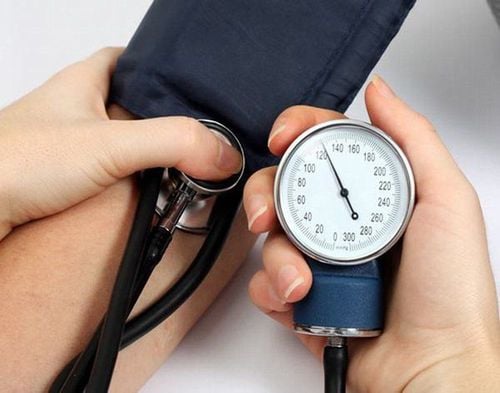This is an automatically translated article.
The article is professionally consulted by Master, Doctor Nguyen Thi Ngoc - General Internal Medicine - Endocrinology - Department of Examination & Internal Medicine - Vinmec Central Park International General Hospital. Doctor has more than 10 years of studying, researching and working in the field of endocrinology.Many people complain of unusual symptoms appearing after eating such as dizziness, dizziness, fatigue, falls and fainting. These are signs of postprandial hypotension, a disorder common in older people, especially in women.
1. Why does blood pressure drop after eating?
Digestion and absorption of the human body is a complex process, influenced by the coordination of many organs other than digestion in the body such as the nervous system and the circulatory system. After eating, the body will mobilize more blood to the stomach and small intestine because they need more energy for absorption. In response to this, the heart will work harder by increasing the frequency of contractions, the peripheral blood vessels will constrict to ensure that the normal blood pressure level is maintained, ensuring the perfusion of the vital organs. weakness, especially the brain. Defects in any of these steps of self-regulation may be responsible for the postprandial drop in blood pressure.
In some cases, the compensatory activity of the circulatory system is still not enough to restore balance, so blood flow to the brain is reduced, leading to manifestations of hypotension after eating such as dizziness, lightheadedness, fainting.
In other cases, patients have lesions related to the nervous system such as sequelae after cerebrovascular accident, traumatic brain injury, spinal cord injury affecting the peripheral nervous system or disorder Circulatory center activity is also a risk factor for postprandial hypotension.
Ineffective operation of the blood pressure control center in the adrenal gland leads to inappropriate blood pressure adjustment to changes in the body.
The system of pressure receptors in the body in the blood vessels and stomach is no longer sensitive to changes in pressure, so it will reduce the activity of signal transmission to the nervous and circulatory systems. Mechanisms of constriction of small peripheral blood vessels and compensatory increase in heart rate after meals are not effectively implemented leading to postprandial hypotension. This mechanism is commonly seen in people with diabetes or the autonomic dysfunction in Parkinson's disease.
Several other factors associated with postprandial hypotension have been shown to be genetic factors, vascular damage due to decreased elasticity, or sclerotic vascular conditions in the elderly.

Người bệnh có bệnh lý tiểu đường
2. Symptoms of low blood pressure after eating
Symptoms of postprandial hypotension are mainly dizziness, lightheadedness or fatigue. Syncope is a symptom that occurs as a result of low blood pressure.
Measuring blood pressure before and after eating allows detecting a drop in blood pressure. Usually, when experiencing a drop in blood pressure after eating, the systolic blood pressure reading (the larger value in the blood pressure measurement) is more variable. If low blood pressure appears unrelated to meals, the patient should visit a medical facility to screen for other diseases related to heart valve disease, dehydration, thyroid disease, anemia. , vitamin B12 deficiency or pregnancy.

Thiếu hụt vitamin B12 có thể gây tụt huyết áp sau khi ăn
3. Diagnosis of low blood pressure after eating
Before making a diagnosis, the doctor will exploit information related to the medical history and characteristics of the clinical symptoms. Patients should self-monitor their blood pressure at home to provide necessary information to the doctor, note the blood pressure values after eating. Blood pressure should be fully measured in both systolic and systolic values at various intervals after eating, starting from 15 minutes to 2 hours after eating. More than 70% of cases of postprandial hypotension occur within 30 to 60 minutes of eating.
Postprandial hypotension can be suspected when systolic blood pressure, a large blood pressure value, falls by at least 20 mmHg within 2 hours of eating. Your doctor will make a diagnosis of postprandial hypotension if your pre-meal blood pressure is at least 100 mmHg and within 2 hours your blood pressure is 90 mmHg.
Several laboratory tests are ordered to rule out other causes of blood pressure changes, including:
Complete blood count to detect anemia Blood sugar test Electrocardiogram to detect abnormalities Cardiac arrhythmias Echocardiography to evaluate structural and functional features of the myocardium.

Siêu âm tim giúp chẩn đoán tụt huyết áp sau khi ăn
4. Complications of low blood pressure after eating
The most serious complication associated with postprandial hypotension is syncope and subsequent trauma. The patient is exhausted, fainting leading to falls causing broken bones, bruises or other injuries. More dangerous is the loss of consciousness while driving and operating machinery. In severe cases, decreased blood supply to the brain system can cause a cerebral infarction.
In general, postprandial hypotension is usually a benign transient disorder. If blood pressure is too low, the person may go into shock, or organ failure.
5. Prevention of low blood pressure after eating
Currently, there is no method that is considered to be able to completely solve the drop in blood pressure after eating. With postprandial hypotension, patients receive more advice regarding prevention than treatment. Some measures patients can apply to prevent a drop in blood pressure after eating include:
Diet divided into several meals a day: when eating too much in one sitting, the stomach expands and has to work. more than. This requires a larger amount of blood to be mobilized to meet the high performance response leading to an increased risk of hypotension. People with low blood pressure after eating should eat many small meals a day instead of 3 main meals like other normal people. Drink water before eating: adding about 200 to 300 milliliters of water before eating makes the patient feel full faster because the stomach is faster. As a result, the amount of food entering the digestive system is reduced, so the absorption of nutrients after eating takes place more smoothly. The energy requirements of the stomach and small intestine are not high, so the likelihood of hypotension occurring after eating is reduced. Avoid using a lot of rice, bread, carbonated soft drinks and foods rich in carbohydrates. These foods are digested and absorbed quickly in the digestive system, so energy requirements are also higher, increasing the risk of hypotension after eating. Rest in a sitting or lying position after eating: The most likely time for a drop in blood pressure is about 30 to 60 minutes after eating. At that time, resting in a sitting or lying position during this period has a role in preventing hypotension. Although there is no treatment to completely stop the blood pressure after eating, it can be completely prevented by a few small notes in the diet and lifestyle.

Khám bệnh lý tim mạch định kỳ là việc làm cần thiết
Please dial HOTLINE for more information or register for an appointment HERE. Download MyVinmec app to make appointments faster and to manage your bookings easily.
Reference source: healthline.com
Recommended video:
Things to know about high blood pressure
SEE MORE
Sleep an hour early 'lowers blood pressure in just 6 weeks' 11 symptoms of low blood pressure and Advice from a doctor Low blood pressure can be life-threatening













